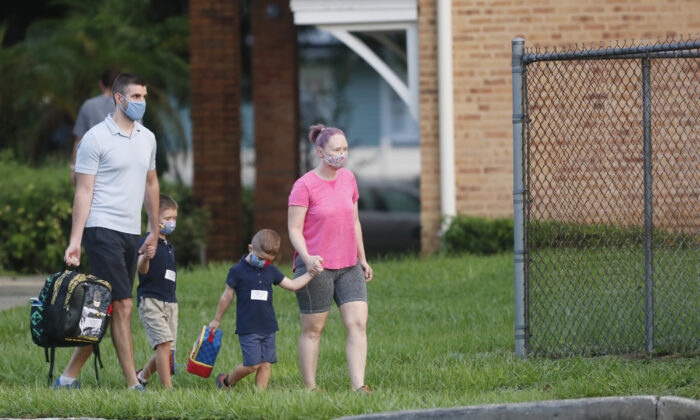Despite concerns of major CCP virus outbreaks in reopened K-12 school buildings, a new Brown University study suggests a very low risk of transmission among teachers and students who return to in-person instruction.
Researchers at Brown University on Wednesday released their first set of data from the National COVID-19 School Response Data Dashboard, the university’s online platform that allows K-12 schools nationwide to anonymously submit their confirmed and suspected COVID-19 cases. The data was collected during a two-week period starting Aug. 31, from some 570 schools across 47 states, with more than 300 schools offering at least some in-person classes.
As of Sept. 24, the data shows a 0.23 percent confirmed or suspected rate among students, while only 0.51 percent of school staff had confirmed or suspected COVID-19 cases. Solely confirmed cases were even lower at 0.075 percent for students and 0.15 percent for teachers.
According to the Washington Post, Brown University researchers said the numbers could mean that reopening K-12 schools may not be as risky as school administrators expected.
 A school faculty member passes out food to family of a student in Oakland, Calif., on March 19, 2020. (Justin Sullivan/Getty Images)
A school faculty member passes out food to family of a student in Oakland, Calif., on March 19, 2020. (Justin Sullivan/Getty Images)Emily Oster, an economics professor at Brown University who helped create the dashboard, told the Post that while the data suggests that the CCP (Chinese Communist Party) virus certainly has a “much lower” rate of spread in K-12 schools when compared to surrounding areas, schools should still take a cautious approach and implement safety strategies when they reopen.
“I don’t think that these numbers say all places should open schools with no restrictions or anything that comes close to that,” Oster warned. “Ultimately, school districts are going to have different attitudes toward risk.”
The findings came after Science Magazine published a new analysis indicating that children and adolescents are at a “much lower risk” of contracting the CCP virus than any other age group, although the reason for the lower burden of the disease in children is not yet clear.
The research also highlighted the “indirect, but very real, harms” that school closures could do to children’s physical and psychological health, including a potential reemergence of vaccine-preventable diseases such as measles due to disruptions to immunization programs.
“In the event of seemingly inevitable future waves of COVID-19, there is likely to be further pressures to close schools,” the researchers wrote. “There is now an evidence based on which to make decisions, and school closure should be undertaken with trepidation given the indirect harms that they incur. Pandemic mitigation measures that affect children’s wellbeing should only happen if evidence exists that they help, because there is plenty of evidence that they do harm.”
Focus News: New Data Suggests Very Low Risk of CCP Virus Infection in K-12 Schools
DOJ: More Than 300 Charged With Crimes Committed Near or at Protests Since May
